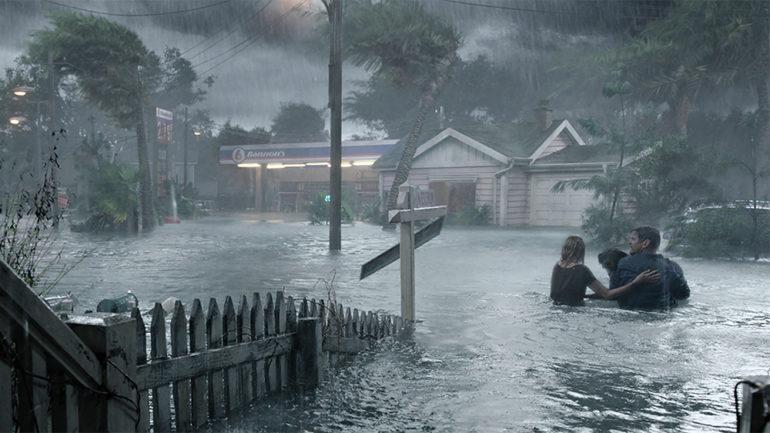‘Crawl’ and Other Disaster Movies Pose Unique Obstacles for Production Designers
By Calum Marsh
LOS ANGELES (Variety.com) – The rampaging fires, earthquakes and storms of disaster movies present unusual challenges for a production: On top of the normal work of creating a film’s lived-in and realistic locations, designers must build sets that the forces of nature can batter, flood and ravage into something completely different.
Take “Crawl,” in which a Category 5 hurricane devastates rural Florida and traps a woman and her father in a flooded home infested with wild alligators. Directed by Alexandre Aja and starring Kaya Scodelario and Barry Pepper, the Paramount release presented a very technical challenge for production designer Alan Gilmore.
“We created huge sets on soundstages that had to go from dry to wet — from a normal day in Florida to a day after a massive storm,” he says.
Water is a dynamic, unpredictable force, and it can be tough to determine just what it will do in action. “When a huge wave strikes a building, it pushes every object in the most amazing way,” Gilmore says. “It’s almost like another force in the environment.”
To make the damage appear as real as possible, Gilmore looked to actual natural disasters, studying the precise effects of hurricanes on houses unable to withstand them.
“We performed a huge amount of study on water damage in buildings, looking at New Orleans and photo documentaries of how the water affected homes,” he says. “We want it to be absolutely realistic, so when the water hits the house on screen, it looks exactly right and causes the right damage and the right effects.”
Gilmore and his team built water tanks on set, and the crew wore wetsuits while working in them. “The force of the water, even in a controlled environment, was incredible,” he says. “We really got to understand the pure power of water and how damaging it can be.”
It’s a scenario well known to Barry Chusid — a production designer on such disaster movie staples as “The Day After Tomorrow,” “2012” and “San Andreas” — who’s had to accommodate everything from earthquakes and tsunamis to alien invasions.
“When the paint gets wet and is sitting underwater for hour after hour after hour, will it peel off the wall or change color from one day to the next?” he posits. “Most materials, be they wood or metal or plastic, change over time underwater. Those details can be overwhelming.”
Trained as an architect, Chusid is interested in the mechanics of buildings and how they react to extreme pressure. “I’ll always want to see things fail in the way they would fail in reality,” he says. “I’ll talk to experts, to structural engineers, people at universities. I’ll visit places that have had disasters happen, to see how it looks.”
Disaster movies do involve “fantastical moments,” Chusid says, but before they get to those heights, he feels it’s critical to be real. “Everything leading up to those moments should feel like it could really happen,” he explains. “You have to ground it in reality.”

